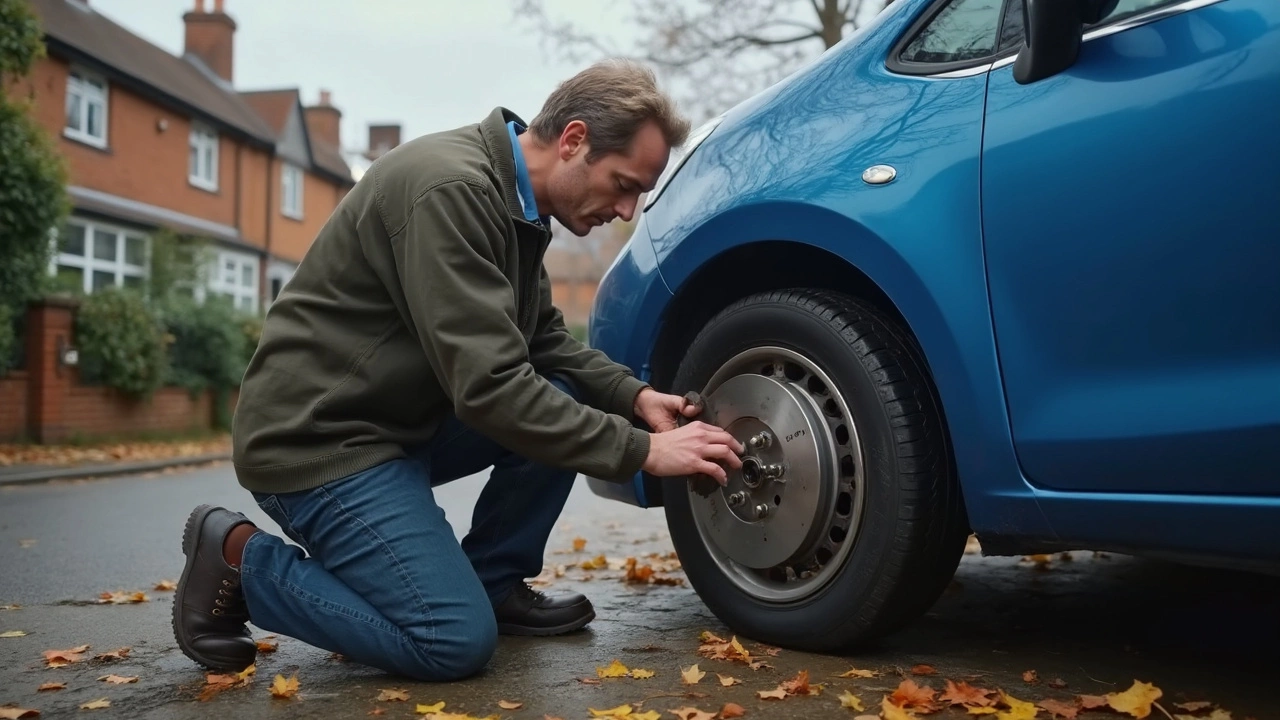Rotor Signs – Recognizing Brake Rotor Issues
When working with Rotor Signs, the visual or auditory clues that tell you a brake rotor is wearing or damaged. Also known as brake rotor warning signs, they help you catch problems early before they affect safety or cost more to fix.
Rotor signs are tightly linked to Brake Rotors, the metal discs that the brake pads clamp onto to slow the wheel. When rotors get thin, warped, or develop scoring, the pads can’t grip properly, leading to vibration, pulsating brakes, or a grinding noise. Those symptoms are classic rotor signs that point to rotor wear. The brake system as a whole relies on the partnership between rotors and Brake Pads, the friction material that presses against rotors to create stopping power. If pads wear unevenly because of a warped rotor, you’ll notice a squeal that gets louder over time. Recognizing this interaction lets you decide whether a simple pad swap will do or if the rotors need deeper attention.
Two main paths exist when rotor signs become serious: Rotor Resurfacing, a machining process that smooths out warps and removes thin spots, or full Rotor Replacement, installing a brand‑new disc to restore optimal thickness and balance. Resurfacing can be cost‑effective if the rotor is still within the minimum thickness spec, but it won’t fix cracks or severe heat spots. Replacement guarantees fresh material and often updates the rotor’s design for better heat dissipation. Understanding the cost, safety, and longevity trade‑offs helps you choose the right fix when rotor signs appear.
Common Rotor Warning Signs
Most drivers first notice a pulsating pedal during hard braking – that’s a clear rotor sign of warping. A high‑pitched squeal that fades when you press the pedal harder usually means the pads are contacting an uneven surface. In some cases, you’ll hear a metallic grinding that signals the rotor surface has worn through the pad backing. Visual checks can reveal blue‑tinted spots where the rotor overheated, or deep grooves that indicate a worn pad left metal on metal contact. If you feel the car pulling to one side when you brake, a rotor may be out of round. Each of these signs connects back to the health of both rotors and pads, and spotting them early can save you from costly replacements.
Now that you know what rotor signs look like, why they happen, and how they affect the whole brake system, you’re ready to dive into the detailed guides below. Below you’ll find practical advice on diagnosing rotor wear, choosing between resurfacing and replacement, and maintaining your brake components so the next time a sign appears you’ll know exactly what to do.

How Do I Tell If I Need New Rotors? Spotting the Signs Early
Jun 17 2025 / Brake PadsNot sure if your car needs new rotors? This article covers the real signs that your brake rotors might need replacing, from obvious noises to those hidden hints you might miss. Get tips for a quick inspection at home, learn how rotors and brake pads work together, and find out why ignoring rotor is never worth the risk. Plus, check out some smart advice for drivers who want to avoid surprise repair bills. If you're unsure about what's going on with your brakes, this is made for you.
VIEW MORE